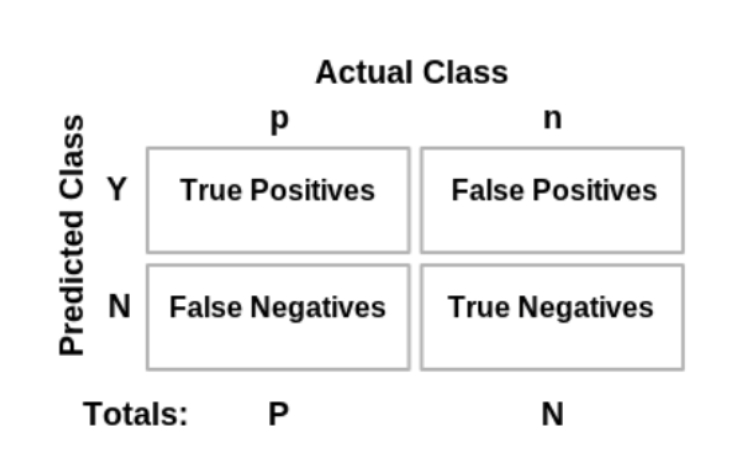Model Performance
1 Why do model evaluation?
这个部分相当于是你做完clean/feature engineering/ model,就到model evaluation了,说白了就是说,你模型到底如何
对应How can we compare this model with others model?
2 How to evaluate a model?
What data to evaluate
select and split data
What method to use(实验评估方法/Model Selection)
Cross Validation
What is Cross Validation?
Assess how your model result will generalize to another independent data set.
Predict and test on the same data is a methodological mistake
There are several cross validation techniques, popular is k-fold cross validation
K-fold Cross Validation
What metrics to compare(性能度量performance measure)
Classification-Confusion matrix
picture

TP/FN/FP/TN;True/False;Postive/Negative
TP: true positive(真正例); FN: false negative(假反例)(type II)
FP: false positive(假正例type I); TN: true negative(真反例)
True/False means if you made a correct/wrong prediction
Positive/Negative means what your prediction is/is not
Accuracy
预测中你对的多少个
Precision
查准率precision:你说的准确到底有多少可以相信的
在所有你认为positive的数据中,有多少真的是positive?
example, spam email:要求precision高(杀的必须准)
Recall Sensitivity
(查全率recall:真的是不是都预测对了)查全率recall:真的是不是都预测对了
在所有positive的数据中,有多少被你正确地识别出来(是positive)
disease/cybersecuirity:要求recall高( 宁可错杀)
如果negative很重要,你看recall,反之你看precision更关注positive
F1
(可以统一recall&precision)
越高越好
Classification-ROC
Receiver operation characteristic curve(根据你的threshold来制定的,threshold是用来就判断是positive or negative,像logistic regression里,我高于0.8,判定为positive,当然你可以选0.6)
Define False Positive Rate as X axis, True Positive Rate as Y axis
The receiver operating curve, also noted ROC, is the plot of TPR versus FPR by varying the threshold.
Special Points in ROC space
best case(0,1); worst case:(1,0)
对角线上的点:
当threshold设定为最高时,所有样本都被预测为negative,此时得到的点在(0,0).
当threshold设定为最低时,所有样本都被预测为positive,此时得到的点在(1,1)
why does Equal Error rate mean FPR = FNR?
已知固定关系: FNR=1-TP/Number of real positive = 1- TPR
根据图中焦点性质可知: FPR (x)= 1-TPR(y)
FPR=FNR
Classification-AUC
你想完整的表示前面的auc么?
Area under the curve of ROC(AUC)
AUC value: [0,1]
The larger the value is, the better classification performance your classifier has.
AUC value is a probability value.
面试题:机器学习里0-1的值,都希望有一个概率。怎么用概率来解释AUC?
ROC AUC is the probability that a randomly-chosen positive example is ranked more highly than a randomly-chosen negative example.
Regression
ERM,empirical risk measure:
coefficient of determination
3 Failures Analysis
不同的策略来解决减少failures(把你的failures的分类)
可以通过模型解决
可以通过调参解决
可以通过data解决(可能你少一部分data)
不能解决
failures analysis的目的就是进一步提高模型的性能,进行迭代开发,retraining
Summary
cross validation——找骨架(model selection/model infrastructure)
mixed validation and training data into training——找肉,例如y=ax+b里面的a和b
model evaluation——ROC,AUC,Precision,Recall
failure analysis——确定问题在哪里,然后更新step1-3
Machine Learning End-to-End Pipeline
Business Design
Data acquisition
collect data from outside system
pre-process into the format that needed
Data preparation
Clean, transform, validate and select data
annotation
feature extraction
prepare data into: training, validation and evaluation datasets
Training & Validation
Select the model
Train the model
Tune the model
Validate the training process
Testing Evaluation
evaluate the performance metrics on the evaluation dataset
analyze failures
Deployment& Inference
Integrated into production apps
config models based on system needs
predict on real-life data
log failures/errors
Last updated